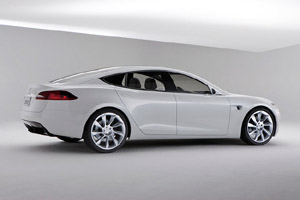
You think Tesla is done with producing just the Roadster and the upcoming Model S? Think again, because word has it that the Model S sedan will be just the start of things, and Tesla is planning on a whole range of electric vehicles based on the Model S including a van, a CUV and a minivan.
Believe it or not, all of this news comes out as a way of explaining just what Tesla, the current EV darlings of the green car set, would be doing with that large green pile of loans they just got from the feds. Tesla applied for, and received, a low cost loan under the Advanced Technology Vehicle Manufacturing program approved a few months ago. OK, fine, but what was Tesla planning on doing with it? Why give the money to a startup with potentially shaky finances and only one model currently in production?
Tesla’s response is potentially revolutionary.
Before Tesla, EVs were largely golf carts with pretensions of being a real car. Tesla stepped up to the plate, and, with its Roadster, really knocked it out of the park. OK, nice, but how about something more practical? Enter the Model S sedan. So, moving from strength to strength, Tesla is now planning to expand its line up, based on the Model S, and offer a wide range of EVs for a variety of different uses.
The Model S platform will be used for spin-offs including a minivan, cross-over utility vehicle (a CUV) and a utility van for fleets and other industrial or civic uses like delivery services and the like. This logically follows, because even if the Model S is as impressive as the Roadster, that still leaves Tesla with a two-model line up. And Tesla needs more than a two car plan in order to be viable in the long-term.
The loan money that Tesla got from the DOE will be used to complete development of the Model S as well as constructing the plant to produce the car, it will also be used for a separate powertrain plant to produce motors, electronics and batteries for the car.
And now it looks like Tesla will continue its trendsetting ways, and use the largess of the federal government to make even more economically and environmentally viable EVs.
Source: AutoBlogGreen
Photo from Flickr user dpstyles


Leave a Reply